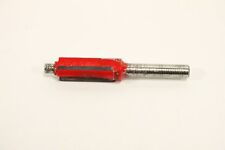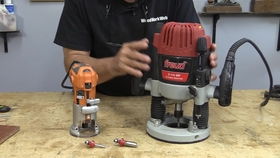
Understanding Flush Trim Router Bits: A Comprehensive Guide
Flush trim router bits are essential tools in the woodworking and carpentry industry. They are designed to trim the edges of materials, ensuring a clean and precise finish. Whether you are a professional woodworker or a DIY enthusiast, understanding the different types and features of flush trim router bits is crucial for achieving the best results. In this article, we will delve into the details of flush trim router bits, covering their design, applications, and key features.
Design and Construction

Flush trim router bits are typically made of high-quality materials such as carbide or high-speed steel. These materials ensure durability and longevity, making them suitable for heavy-duty applications. The design of a flush trim router bit consists of several key components:
- Shank: The shank is the part of the bit that fits into the router’s collet. It is available in various sizes, such as 1/4″, 1/2″, and 3/4″, to accommodate different routers.
- Flute: The flute is the spiral-shaped cutting edge of the bit. It helps in removing material and reducing friction during the trimming process.
- Guide bearing: The guide bearing is a crucial component that ensures the bit trims the material flush with the edge of the workpiece. It is available in different sizes and shapes to accommodate various trimming needs.
- Tip: The tip of the bit is the part that comes into contact with the workpiece. It can be straight, rounded, or with a ball end, depending on the desired trimming effect.
Table 1: Flush Trim Router Bit Specifications
| Component | Description |
|---|---|
| Shank | The part that fits into the router’s collet, available in various sizes. |
| Flute | The spiral-shaped cutting edge that removes material and reduces friction. |
| Guide bearing | The bearing that ensures the bit trims the material flush with the edge of the workpiece. |
| Tip | The part that comes into contact with the workpiece, available in different shapes. |
Applications

Flush trim router bits are versatile tools that can be used for a wide range of applications. Some common uses include:
- Trimming laminate and veneer: Flush trim router bits are ideal for trimming the edges of laminate and veneer sheets to match the substrate.
- Creating rabbets and dadoes: These bits can be used to create rabbets and dadoes for joints, such as dovetail or mortise and tenon.
- Trimming moldings: Flush trim router bits can be used to trim moldings and profiles to fit the edges of a workpiece.
- Shaping edges: They can also be used to shape the edges of workpieces, such as rounding or chamfering.
Key Features

When selecting a flush trim router bit, consider the following key features:
- Flute design: The flute design can affect the bit’s performance and chip ejection. Some bits have a larger flute for better chip ejection, while others have a smaller flute for a smoother finish.
- Guide bearing size: The size of the guide bearing should match the thickness of the material you are trimming. A larger bearing is suitable for thicker materials, while a smaller bearing is better for thinner materials.
- Tip shape: The tip shape of the bit should be chosen based on the desired trimming effect. A straight tip is suitable for general trimming, while a rounded or ball-end tip is ideal for shaping edges.
- Material: High-quality materials, such as carbide or high-speed steel, ensure durability and longevity.
Conclusion
Flush trim router bits are essential tools for achieving clean and precise trimming in woodworking and carpentry projects







